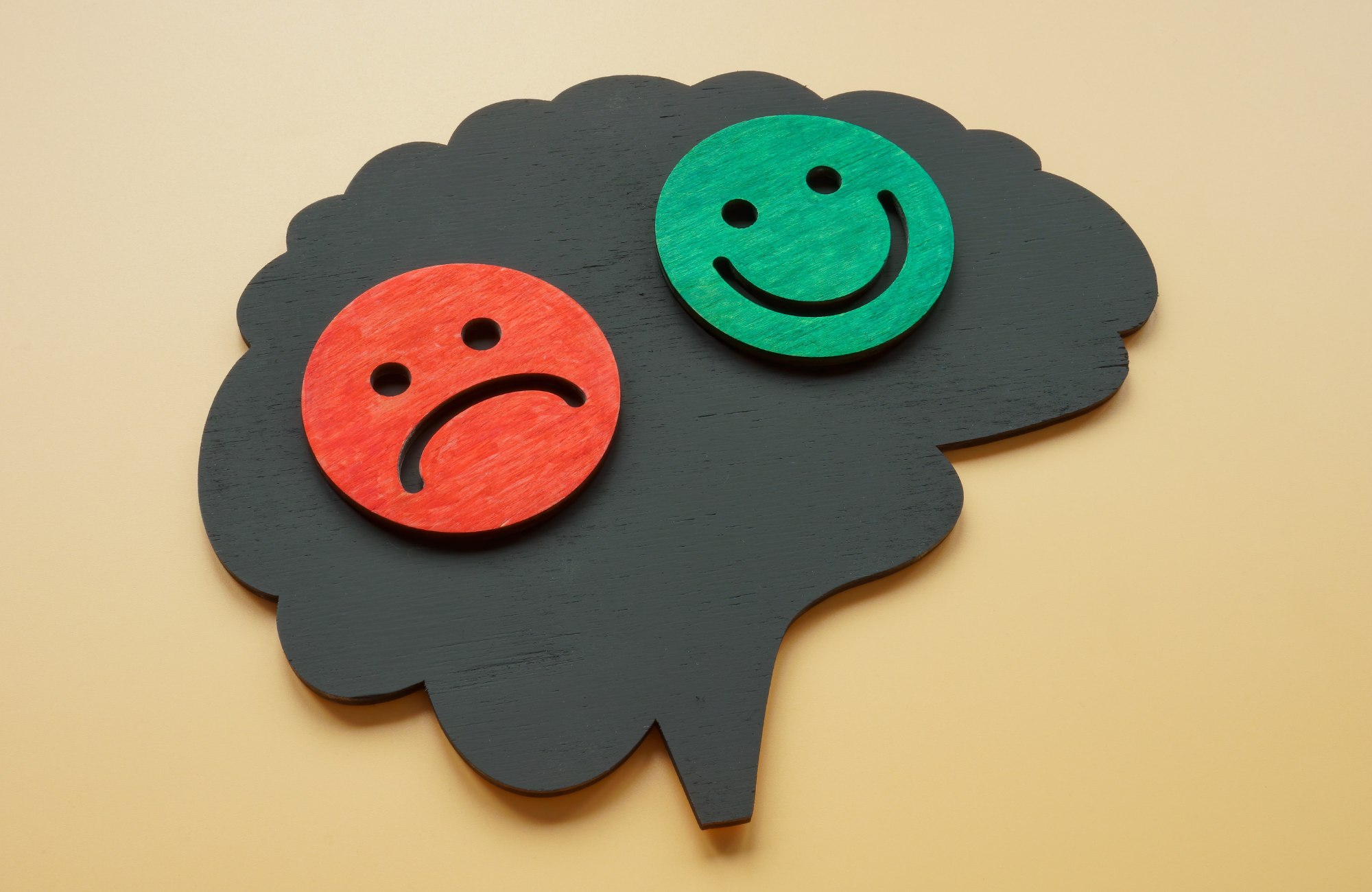Constant worry, racing thoughts, and a lingering sense of dread are daily realities for people living with generalized anxiety disorder (GAD). Affecting over 6 million adults in the United States, GAD involves ongoing anxiety about a wide range of life issues, often without a clear cause.
Cognitive behavioral therapy for generalized anxiety is one of the most effective and evidence-based treatment options available. Instead of offering temporary relief like medication, CBT teaches individuals how to identify anxious thought patterns, challenge them, and build lasting strategies to regain control. With the right support, long-term relief is achievable.
Understanding Generalized Anxiety Disorder (GAD)
Generalized anxiety disorder (GAD) has shifted from its early classification as “anxiety neurosis” to a well-defined diagnosis in the DSM-5, which describes it as excessive, hard-to-control worry about various aspects of life that persists most days for at least six months. Unlike ordinary anxiety, GAD is marked by chronic, intrusive thoughts and a constant sense of dread that disrupts daily functioning and feels nearly impossible to escape.
The diagnostic criteria include:
- Excessive anxiety and worry occurring more days than not for at least 6 months
- Difficulty controlling the worry
- The anxiety and worry are associated with three or more of the following symptoms:
- Restlessness or feeling keyed up or on edge
- Being easily fatigued
- Difficulty concentrating or the mind going blank
- Irritability
- Muscle tension
- Sleep disturbance
GAD symptoms include persistent and uncontrollable anxiety regarding various everyday concerns, significantly impacting individuals’ daily functioning and overall well-being.
Symptoms and Manifestations
Generalized Anxiety Disorder (GAD) affects both the mind and body. It causes persistent worry, fear of uncertainty, and constant thoughts of worst-case scenarios. Physically, it may lead to muscle tension, fatigue, headaches, poor sleep, difficulty sleeping, and a racing heart.
Behaviorally, people with GAD often avoid stress, seek reassurance, or overprepare to reduce their anxiety. Unlike panic disorder, which involves sudden attacks, GAD is marked by ongoing, low-level worry. This steady pattern calls for long-term treatment strategies that address both emotional and physical symptoms.
Theoretical Foundations of CBT for GAD
Cognitive-Behavioral Model of GAD
The cognitive-behavioral model of GAD conceptualizes the disorder as maintained through a complex interaction between thoughts, feelings, behaviors, and physical sensations. At its core, GAD involves maladaptive thinking patterns that lead to emotional distress, which then prompts unhelpful behaviors designed to reduce anxiety in the short term but actually maintain it over time.
This maintenance cycle typically follows a pattern where:
- The person encounters a trigger (internal or external)
- This activates worry thoughts about potential threats or negative outcomes
- These thoughts lead to physical anxiety symptoms and emotional distress
- The person engages in safety behaviors or avoidance to reduce anxiety
- These behaviors provide temporary relief but reinforce the worry process
Cognitive factors are critical elements that contribute to the maintenance of pathological worry in GAD. Understanding these cognitive processes is essential to inform and refine cognitive behavior therapy (CBT) interventions, aiming to effectively address the core symptoms of anxiety and improve treatment outcomes. Understanding this cycle is crucial for effective CBT intervention, as treatment targets each component of the cycle.
Components of CBT for Generalized Anxiety Disorder
Assessment and Case Formulation
Effective CBT for GAD begins with assessment tools like the GAD-7, clinical interviews, and functional analysis to identify triggers and thought patterns. These tools help gauge symptom severity and guide a personalized treatment plan through a collaborative CBT case formulation.
Psychoeducation
Psychoeducation in CBT for GAD helps clients understand how anxiety works, why worry feels uncontrollable, and how CBT can reduce it. By explaining the cognitive-behavioral model and the role of avoidance and unproductive worry, it builds insight and motivation for change.
Cognitive Interventions
Cognitive restructuring is a central component of CBT for GAD. This process helps clients identify and challenge the unhelpful thinking patterns that fuel their anxiety. Key cognitive techniques include:
- Identifying Automatic Thoughts: Clients learn to recognize the spontaneous worry thoughts that occur in response to triggers. They practice catching these thoughts as they happen and recording them to increase awareness of thinking patterns.
- Recognizing Cognitive Distortions: Therapists help clients identify common thinking traps such as catastrophizing (“What if the worst happens?”), fortune-telling (“I know this will go badly”), or all-or-nothing thinking (“If I’m not perfectly prepared, I’ll completely fail”).
- Thought Challenging: Clients learn to evaluate the evidence for and against their worry thoughts, consider alternative perspectives, and develop more balanced, realistic thoughts.
- Decatastrophizing: This technique involves asking, “What if the worst did happen?” and exploring coping resources. By working through feared scenarios, clients often discover they have more capacity to handle difficulties than they previously believed.
- Addressing Meta-Worry: For clients with worries about worry itself (e.g., “My worrying is going to make me sick” or “I can’t control my worrying”), CBT addresses these secondary concerns directly.
Cognitive behavioral treatment is highly effective in reducing symptoms of Generalized Anxiety Disorder (GAD) through techniques like cognitive restructuring, mindfulness, and systematic exposure.
Behavioral Techniques
Behavioral strategies in CBT for GAD focus on reducing avoidance and breaking the cycle of anxiety maintenance. Key behavioral interventions include:
- Worry Exposure: Clients deliberately focus on worst-case scenarios to reduce fear and build emotional tolerance.
- Behavioral Experiments: They test worry beliefs through real-life actions to see if feared outcomes actually occur.
- Reducing Safety Behaviors: Clients work to stop habits like overchecking or reassurance-seeking that reinforce anxiety.
- Scheduled Worry Time: Worry is limited to a set daily time, helping clients delay and contain anxious thoughts.
- Confronting Avoidance Behaviors: Exposure therapy helps clients face challenging situations they typically avoid, reducing fear and regaining control over their anxiety.
Relaxation and Somatic Management
Relaxation techniques for GAD include progressive muscle relaxation to ease tension and muscle aches, diaphragmatic breathing to slow anxious breathing, applied relaxation to trigger calm during early anxiety signs, and body scan meditation to build mindful awareness of physical sensations.
Mindfulness and Acceptance-Based Approaches
Mindfulness-based strategies in CBT for GAD help clients focus on the present, observe thoughts without judgment, and accept uncertainty. These techniques reduce the need to control worry and also improve focus and emotional regulation, benefiting those with anxiety and depression.
Problem-Solving Training
Problem-solving training helps clients shift from anxious overthinking to practical action by teaching them to define problems, set goals, and choose solutions. It also strengthens cognitive skills like focus and decision-making, which are essential for resolving real-life concerns.
Cognitive Behavioral Therapy for Different Populations
Cognitive behavioral therapy (CBT) is a highly effective treatment for anxiety disorders, including GAD, and can be adapted for different populations, including children, adolescents, and older adults. CBT for GAD typically involves identifying and challenging negative thought patterns and behaviors, learning relaxation techniques, and developing practical coping strategies. Behavioral therapy, cognitive therapy, and cognitive behavioral therapy are all effective treatments for anxiety disorders, and can be used in combination with medication or as a standalone treatment.
The Treatment Process
Structure of CBT Treatment
CBT for GAD typically includes 10–20 weekly sessions with structured elements like homework review, skill-building, and worry tracking. Homework reinforces progress, while following established protocols, such as Borkovec’s, ensures targeted, effective treatment for anxiety-related thought patterns.
Early Phase of Treatment
The initial phase of CBT for GAD (usually sessions 1–3) focuses on assessment, diagnosis, case formulation, psychoeducation, goal setting, building a strong therapeutic alliance, and introducing early coping tools like relaxation and worry monitoring. This foundation helps clients understand their anxiety patterns and builds motivation for meaningful change.
Middle Phase of Treatment
The middle phase of CBT for GAD (sessions 4–12) focuses on core interventions like cognitive restructuring, behavioral experiments, worry exposure, reducing safety behaviors, building uncertainty tolerance, problem-solving skills, and addressing core beliefs. As clients gain confidence, interventions become more challenging to promote lasting change.
Late Phase of Treatment
The final phase of CBT for GAD (typically the last 2–4 sessions) focuses on consolidating progress, developing relapse prevention strategies, reducing session frequency, planning for future stressors, addressing remaining concerns, and celebrating successes. This phase prepares clients to maintain their gains independently after treatment ends.
Evidence for CBT’s Effectiveness
Research Support
Cognitive behavioral therapy is a highly effective treatment for GAD, with 60–70% of patients seeing lasting symptom relief. Research, including brain imaging studies, shows CBT produces long-term changes in areas linked to fear and emotion regulation.
CBT vs. Medication
Both CBT and medications like SSRIs can treat GAD, but CBT offers longer-lasting results and lower relapse rates. A combined approach may help those with severe symptoms, and treatment choice should be based on individual needs and history.
Factors Affecting Treatment Outcomes
Several factors influence CBT success for GAD, including symptom severity, co-occurring conditions, and client engagement. The therapist’s skill, the therapeutic relationship, and the format or delivery of sessions also affect outcomes. Adapting CBT techniques helps target cognitive processes that drive anxiety and improve results.
Innovations and Advanced Applications
Transdiagnostic Approaches
Transdiagnostic treatments like the Unified Protocol (UP) effectively address GAD by targeting shared features across psychological disorders, such as emotion regulation and cognitive flexibility. Research shows UP is as effective as disorder-specific CBT and offers an efficient way to treat multiple mental health conditions at once.
Technology-Enhanced CBT
Technology has expanded the reach and accessibility of CBT for GAD through several innovations:
- Internet-delivered CBT (ICBT): Structured online programs that deliver CBT content through modules, often with some therapist support. Research shows these can be as effective as face-to-face therapy for many individuals with GAD.
- Mobile Applications: Apps offering CBT-based tools for monitoring worry, practicing relaxation, challenging thoughts, and tracking progress. These can supplement formal therapy or provide support between sessions.
- Virtual Reality Exposure: Immersive environments that facilitate exposure to worry-provoking situations in a controlled setting.
- Telehealth: Remote delivery of traditional CBT via video conferencing, which has shown comparable effectiveness to in-person treatment.
These technology-based options help overcome barriers to treatment such as geographic limitations, scheduling difficulties, cost concerns, and stigma. Effective treatment delivery options are crucial to ensure that these innovations are accessible and beneficial to older adults suffering from GAD.
Complementary Approaches
In addition to traditional CBT, several complementary therapies may support anxiety treatment. Mindfulness-Based Stress Reduction (MBSR), Acceptance and Commitment Therapy (ACT), and Mindfulness-Based Cognitive Therapy (MBCT) are commonly used to enhance emotional regulation and reduce worry. These approaches can be helpful for clients who don’t fully respond to standard CBT or who prefer a more acceptance-focused approach.
Preventing Relapse and Maintaining Progress
Identifying Warning Signs
A key part of relapse prevention is teaching clients to recognize early warning signs of rising anxiety, such as physical tension, sleep issues, increased worry or avoidance, and a drop in enjoyable activities. Noticing these patterns early allows them to apply coping strategies before symptoms worsen. Control groups are essential in research for identifying these warning signs, as they allow for a comparison of outcomes between those who received cognitive-behavioral therapy and those who did not, highlighting the effectiveness of the intervention.
Maintaining CBT Skills
For lasting results, clients should keep using CBT skills after treatment ends. This includes practicing relaxation, challenging worry thoughts, facing uncertainty, reviewing CBT tools, and scheduling booster sessions during stressful times. Many therapists also suggest creating a personal “anxiety management toolkit” to help maintain progress and stay prepared. Integrating these CBT skills into routine clinical care is crucial for maintaining progress and effectively managing symptoms in real-world settings.
When to Seek Additional Help
Clients should know that needing extra support is normal and not a setback. Signs that more help may be needed include a strong return of anxiety, new symptoms, major life stressors, or a desire to revisit CBT tools. Options include booster sessions, resuming therapy, joining support groups, or exploring medication or complementary treatments. It is important to seek psychological treatment to address these issues effectively and ensure access to appropriate therapies.
Conclusion
Cognitive behavioral therapy offers a powerful, evidence-based path for managing generalized anxiety disorder. By targeting the thoughts, behaviors, and physical symptoms that fuel chronic worry, CBT helps individuals break free from the anxiety cycle and build lasting coping skills. With personalized guidance, clients can better understand their anxiety, regain a sense of control, and move forward with greater confidence and resilience.
If you’re struggling with persistent anxiety or worry, KievalCounseling in Massachusetts is here to help. Our experienced therapists specialize in cognitive behavioral therapy for generalized anxiety disorder and provide compassionate, personalized care tailored to your needs. Contact us today at 781-369-5644 or visit our website to schedule a confidential consultation and take the first step toward lasting relief.
FAQs
Does cognitive behavioral therapy work for generalized anxiety disorder?
Yes, cognitive behavior therapy is highly effective for generalized anxiety disorder, with studies showing most GAD sufferers experience significant improvement. Behavioral and cognitive therapies typically provide longer-lasting benefits than medication alone. Various cognitive behavioral therapies have been shown to effectively mitigate symptoms of anxiety, worry, and cognitive impairment in different age groups.
What is immediate relief for GAD?
Immediate relief techniques include deep breathing, muscle relaxation, and grounding exercises that reduce both physical and depressive symptoms. These psychological interventions provide temporary relief while developing longer-term coping strategies. Immediate relief techniques are also crucial for managing panic attacks, which are a specific manifestation of anxiety disorders and can significantly impact daily life and well-being.
What triggers anxiety disorder?
Mental disorders like GAD are triggered by a combination of genetic factors, cognitive biases that distort thinking, and environmental stressors. Similar patterns are seen in other anxiety disorders like social anxiety disorder and posttraumatic stress disorder, though specific triggers vary by individual. Obsessive-compulsive disorder (OCD) is also related to anxiety disorders and can be triggered by similar factors, including genetic predispositions and environmental stressors.
Can you overcome health anxiety?
Yes, health anxiety can be effectively overcome with proper psychological therapy that addresses catastrophic thinking and reduces checking behaviors. Cognitive behavioral treatments targeting these patterns show excellent results for most patients who complete therapy. Treating generalized anxiety disorder is crucial in overcoming health anxiety, as evidence-based strategies like cognitive-behavioral therapy (CBT) are highly effective in managing the condition.





